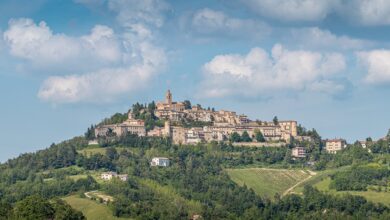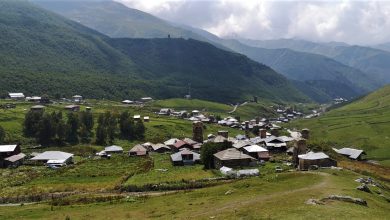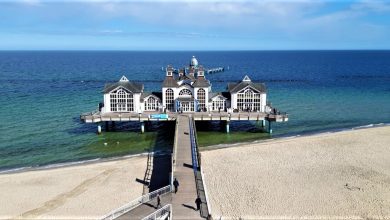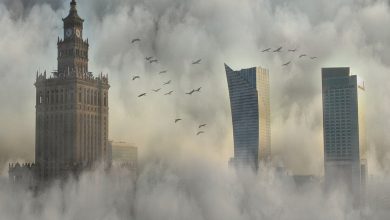Catalonia in the Wintertime: A Journey

Playa, sol e independencia? Just like any classic holiday destination, Catalonia must cope with stereotypes. The colourful Instagram pages of travel companies, however, only show a ridiculously small fraction of what awaits the curious adventurers. This little selection is a treasure chest of the wintry Catalonia that will enrich and delight the soul of every traveller.
Catalonia’s villages – ancient hidden pearls in the hinterland
Barcelona is a splendour stifled by its own beauty. Girona being a key film location in the Game of Thrones made it a place of pilgrimage. While celebrating high school graduates crowd Costa Brava, but behind the facade of bread and circuses lie romantic villages that have been spared from tourism.
If you reminiscence about the golden days of the Middle Ages, you should not miss a trip to Besalú. This village is known for its romantic flair and ethnic diversity. The medieval atmosphere comes from Gothic churches, a monastery, and a synagogue. If you miss the sound of breaking waves, take the train to Pals. The Romanesque clock tower, a millennial church, well-preserved defence towers, narrow streets, and fairy-tale fountains are its landmarks. Moreover, the Mirador Josep Pla, a viewing platform, offers a breath-taking view over the hinterland of Costa Brava. From here, the Salzburg of Catalonia – the village of Peralada can be admired. Besides Castell de Peralada festival, the town is also famous for its castle and monastery. Today, it houses an important library, which, among other things, has antique editions of Don Quixote, as well as a glass and wine museum.

Catalan nature – where the treasures are buried
For those who prefer physical activity, Catalonia offers both waters and mountains. The Camí de Ronda, a former historic escape route between villages and beaches, is highly recommendable for lovers of the sea. The name goes back to the border guards who turned their laps to track down smugglers (ronda = engl. round). Nowadays, millennials enjoy excellent day-to-day transportation along the coast after a frolicsome party night. Altogether, the distance is about 43 kilometres, starting in the picturesque Sant Feliú de Guíxols and ending in the fishing village of Begur.
Els Tres Monts is a true midwinter night’s dream. The walking path in the backcountry of Barcelona runs through the enchanted forests of the three nature reserves: Montseny, Sant Lorenç i l’Obac, and Montserrat. Six stages with lengths of between 24 and 3.5 kilometres impress with untouched landscapes, marvellous panoramas and quaint villages along the way.
Summiteers can climb the Camí dels Bons Homes. “The good men” allude to the Cathars living in France until the 13th century. The Albigensian Crusade of the Catholic Church forced the Christian movement to flee across the Pyrenees. Once a journey into the unknown is today one of the most beautiful cross-border routes with a comfortable infrastructure and numerous hostels. Santuari de Santa Maria de Queralt is the starting point, the so-called “balcony of Catalonia”. After several idyllic highlights, the trail ends in the French Occitania, the home of the Cathars.
If the sea, forest, and mountains were not enough, La Garrotxa, a volcanic landscape might entice you. The trail network Itinerannia impresses with lava flows in mixed woodland. Here, there are twenty-eight trails covering everything Catalan: flora and fauna, castles and ancient churches. During winters, the trails have a particularly mystical atmosphere.
Catalan culture – Golden jewellery and glittering colours
To round off all the acquired cultural, architectural, and geographic knowledge, the end of a winter trip through Catalonia leads to Sitges, a lovely little town on the coast. Sitges is the carnival stronghold of the country. This year, the celebration of the fifth season will take place from 28th February to 6th March 2019 and will be opened by the crowned Carnival King; for most Catalans, the more honourable King.

Unlike the carnival of Vilanova i la Geltrú, which is celebrated more festively and traditionally, Sitges is known for its eccentricity. The carnivalists carry feathers and glitter costumes, following the Brazilian model. The back-story of the big party in the small town was once the rivalry between two clubs that wanted to make their carnival more colourful, lush, and louder than the other. Ultimately, it was megalomania of a hundred years ago that brought Sitges to this popularity. In other words: celebrate, dance, and show the world the second side of Catalonia’s face!
However, it does not matter which village, trail, or costume you choose. They all are a bloom of Catalan history and the cultural wealth of the Iberian Peninsula. With a freshly tapped Sant Jordi and a plate of Patates Braves, you can unwind, enjoy the seclusion, or party all week – Bon viatge!





